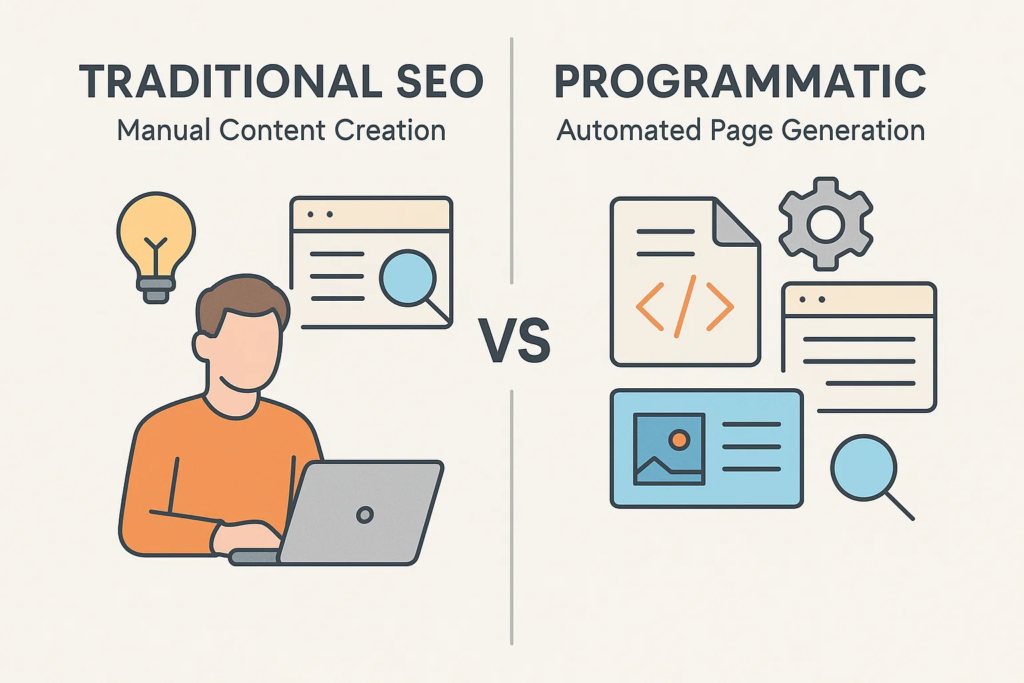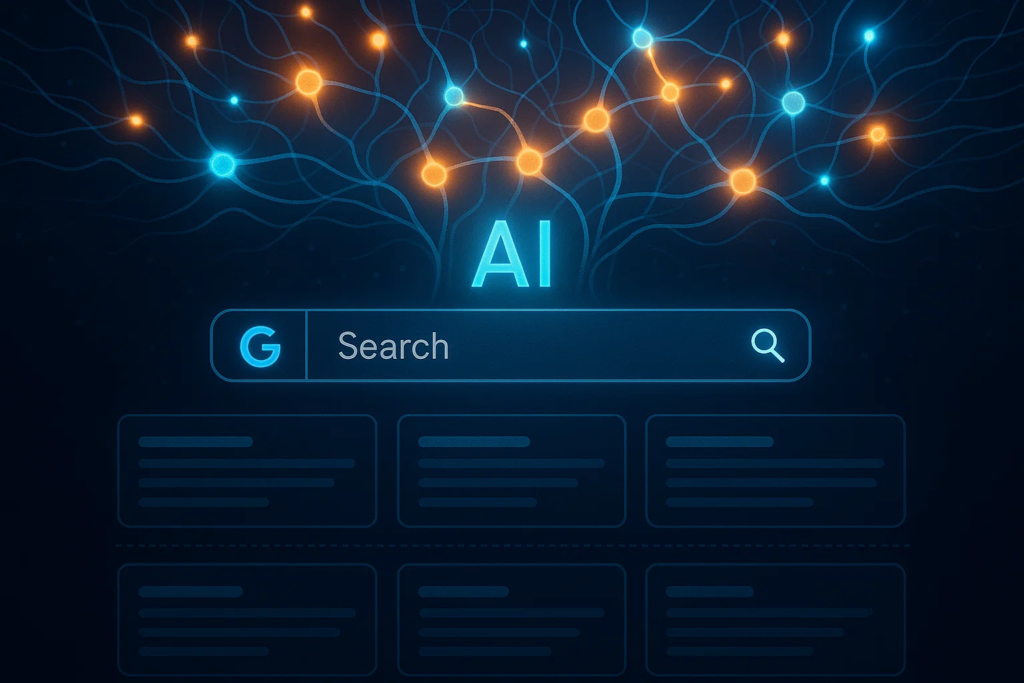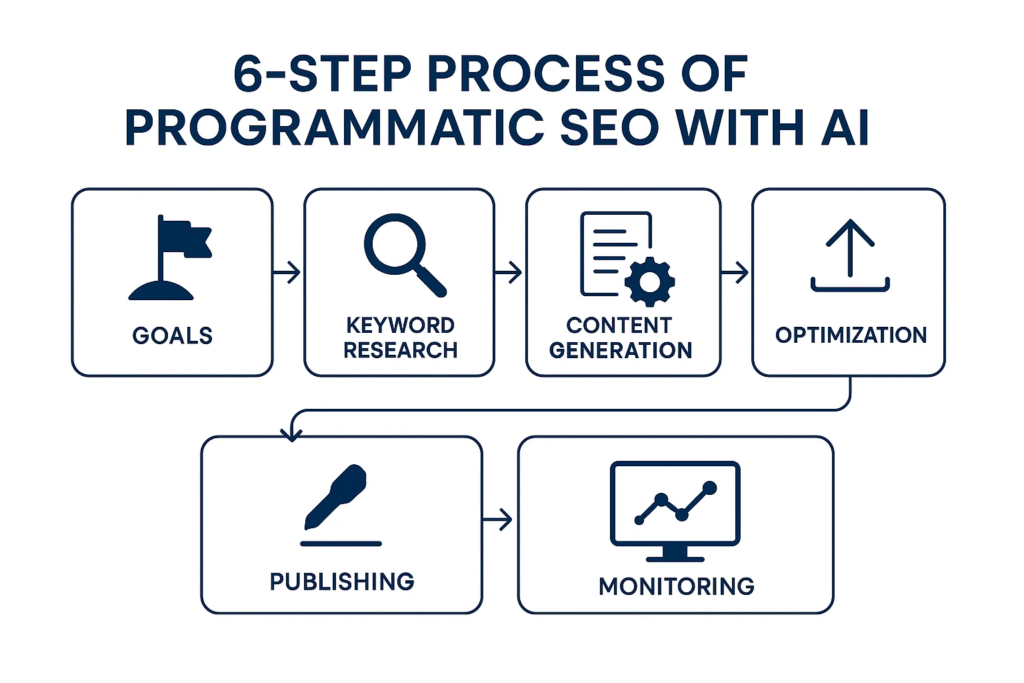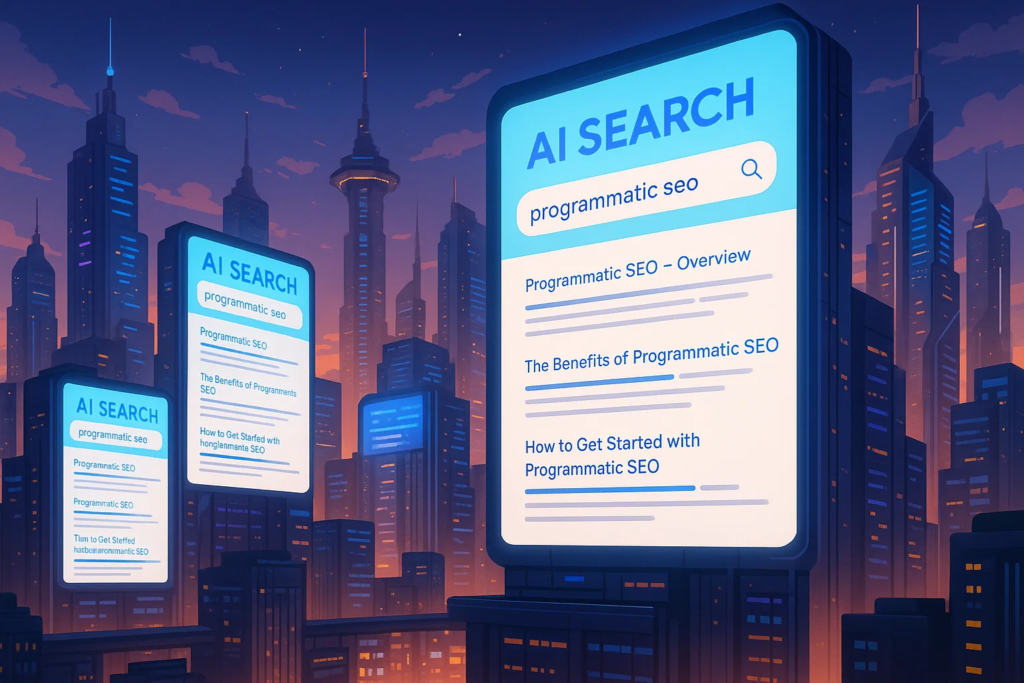Introduction
In today’s digital landscape, SEO is evolving rapidly. Traditional strategies, though still relevant, struggle to keep pace with the growing demand for large-scale content and highly targeted keyword coverage. Enter programmatic SEO, a revolutionary approach that leverages automation and AI to generate content at scale without sacrificing relevance or quality.
Programmatic SEO allows businesses to create hundreds or even thousands of pages dynamically, each optimized for specific keywords and search intent. With the integration of AI, the process becomes faster, smarter, and more data-driven, enabling you to scale your SEO efforts efficiently.
This guide will take you through everything you need to know about programmatic SEO with AI, including its definition, benefits, AI tools, step-by-step implementation, best practices, case studies, and the future of AI-driven SEO.
What is Programmatic SEO?
Programmatic SEO is an approach that automates the creation of web pages using templates, structured data, and dynamic content, all optimized for search engines. Unlike traditional SEO, which relies heavily on manually crafted content, programmatic SEO focuses on efficiency, scalability, and data-driven strategies.

Key Elements:
- Dynamic Pages: Pages are generated automatically based on structured data.
- Automated Content Generation: AI can create relevant content for each page at scale.
- Data-Driven Keyword Targeting: Keywords are selected based on search volume, competition, and user intent.
Benefits:
- Speed: Generate content faster than manual processes.
- Scale: Cover thousands of keywords and long-tail variations.
- Precision: Target search intent accurately with AI analytics.
Use Cases:
- E-commerce product pages
- Local business landing pages
- SaaS solutions targeting multiple verticals
Caution: Improper implementation may lead to thin or duplicate content, negatively impacting rankings.
The Role of AI in Programmatic SEO
AI transforms programmatic SEO by automating complex processes and providing actionable insights. Here’s how AI integrates into SEO:

Key Functions:
- Keyword Research Automation: AI identifies high-volume, low-competition keywords and clusters them by intent.
- Content Generation: AI tools like ChatGPT, Jasper, and Writesonic create unique content for each page.
- Content Optimization: Tools such as SurferSEO and MarketMuse analyze content for relevance and structure.
- SERP Analysis: AI predicts trends and recommends adjustments to outrank competitors.
AI vs Human Content: While AI scales content efficiently, maintaining quality requires human oversight to ensure readability and factual accuracy.
Common Pitfalls:
- Plagiarism or repetitive content
- Misalignment with user intent
- Hallucinated or irrelevant content
Step-by-Step Guide to Programmatic SEO With AI

Step 1: Define Your SEO Goals
Identify what you want to achieve:
- Increase traffic
- Improve rankings
- Boost conversions
Understand your audience and map content to the customer journey. Clear goals guide AI in generating targeted, effective pages.
Step 2: Identify Keywords and Topics at Scale
AI accelerates large-scale keyword research. Use AI tools to:
- Generate long-tail keyword variations
- Cluster related terms for topic silos
- Prioritize based on intent and competition
Example Workflow:
- Start with seed keywords
- Generate hundreds of long-tail variations
- Group keywords by search intent
Tools: Ahrefs, SEMrush, Keyword Chef, GPT-powered keyword ideation.
Step 3: Generate Programmatic Content
AI generates content dynamically:
- Templates: Create structured templates for product pages, blog posts, or local landing pages.
- Dynamic Data: Pull real-time data (prices, availability, reviews) into content.
- Uniqueness: Use AI to ensure each page is distinct to avoid duplicate content penalties.
Example: Automatically generate unique product descriptions for 500+ SKUs using AI templates and structured data.
Step 4: Optimize Content for Search Intent
Use AI to optimize for user intent and SERP features:
- Tools: SurferSEO, Frase, MarketMuse
- Align headings, meta descriptions, and FAQs with search intent
- Automate internal linking for better crawlability and engagement
Step 5: Automate Page Creation and Publishing
Dynamic page creation streamlines SEO at scale:
- CMS integration: WordPress, Shopify, Webflow
- AI-generated meta titles, descriptions, and schema markup
- Test templates for conversion and user engagement before full deployment
Step 6: Monitor, Analyze, and Iterate
AI analytics tools help you measure success:
- Track rankings, CTR, and engagement
- Identify pages that underperform
- Continuously improve content based on insights
Best Practices for AI-Driven Programmatic SEO
- Maintain high-quality content standards
- Avoid over-automation to prevent penalties
- Ensure relevance and alignment with user intent
- Regularly audit and update programmatically generated pages
- Consider ethical transparency for AI-generated content
Case Studies / Examples
Example 1: E-commerce Site
- 1,000 product pages generated programmatically
- AI templates for product descriptions and meta tags
- Result: 40% increase in organic traffic in 3 months
Example 2: Local SEO Pages
- Multi-location business created AI-generated landing pages
- Optimized for local keywords and structured data
- Result: Top 3 rankings for multiple locations within weeks
Example 3: Blog Clusters
- AI-generated clusters of 200+ blog posts for affiliate marketing
- Optimized with topic clusters and internal linking
- Result: 60% increase in organic traffic and higher engagement
Tools and Resources for Programmatic SEO
- AI Writing Tools: ChatGPT, Jasper, Writesonic
- SEO Analytics & Optimization: SurferSEO, Ahrefs, SEMrush
- Automation & Page Generation: Zapier, Make.com, CMS plugins
- Data Sourcing & Enrichment: Google Sheets + APIs, structured data sources
Common Challenges and How to Overcome Them
- Duplicate Content: Ensure unique AI-generated content
- Quality Control: Combine human oversight with AI
- Indexing Issues: Submit sitemaps and use structured data
- AI Hallucinations: Review AI output for accuracy and relevance
- Scaling Errors: Test small batches before large-scale deployment
The Future of Programmatic SEO and AI

The future of SEO is increasingly AI-driven:
- Search engine algorithms favor high-quality, intent-aligned content
- AI will enable hyper-personalization and predictive SEO
- Integration with voice search and multimedia content will expand
- Businesses leveraging AI in SEO will scale faster and outperform competitors
Conclusion
Programmatic SEO with AI is a game-changer for businesses looking to scale content, improve rankings, and save time. By combining automation, AI-generated content, and data-driven strategies, you can achieve unprecedented SEO efficiency. Start small, monitor performance, and gradually scale while maintaining content quality.
Leverage AI tools, follow best practices, and continuously iterate to stay ahead in the competitive SEO landscape. Platforms like AIToolBank can help you discover the right AI tools to implement your programmatic SEO strategy successfully.








